What inspires your quilts?
Do you work from a pattern or develop your own designs? Where do you get the ideas for your designs? Are you using research imagery, or do you create it from memory?
I frequently start my design process with research images, and I have thousands of photographs on my phone to attest to my love of photographic research for my quilts. Most of my designs start with some form of research but end with various aesthetics. Using inspirational images can result in quilts with a pictorial feel, but you can also end up with a heavily abstracted design. Starting a design with research images:
- Helps you make decisions
- Brings out your unique interpretation of the world
- Enhances specificity
Let’s look at each use for design research and see how each aspect influenced some of my landscape-inspired quilts.
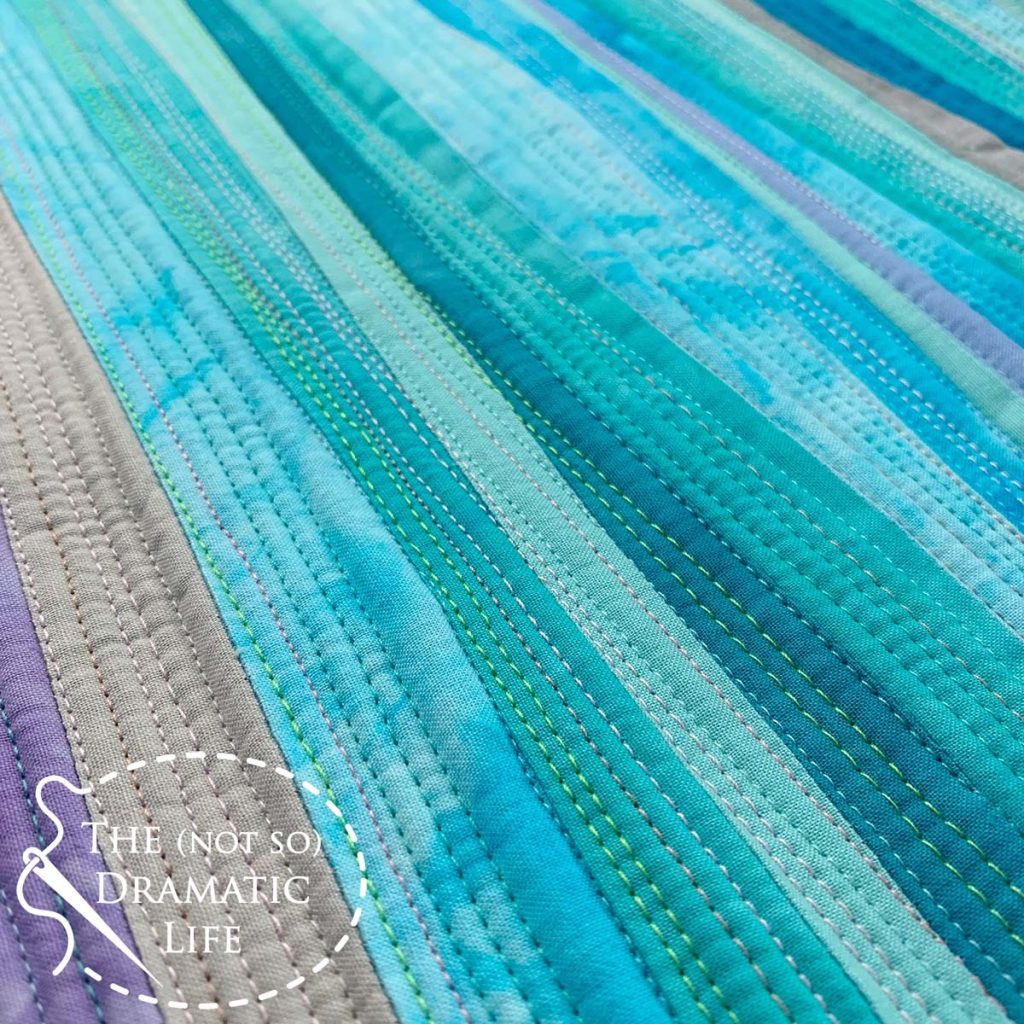
Using Research to Help Make Decisions
Decision-making is a key aspect of design. Each time we start a project with a blank page, screen, or design wall, we can make every choice to turn that blank surface into a finished design. The possibilities are endless.
Endless possibilities can be inspiring or overwhelming. What do we do with a blank slate and no specific direction? We almost always fall back on the same techniques and design styles that we have used before. There is nothing inherently wrong with this way of working, but if you want to grow as a designer, incorporating research into your work will help you expand and evolve your style.
When you start with research, some decisions are made for you. You don’t have to use every aspect of research imagery in your design, and probably shouldn’t in most cases. However, starting with research allows you to pick out key elements to inform the quilt design in a way you may not have used if you relied solely on your imagination or memory.

In Mocha Mousse Mountains, I started with a photograph I took at a scenic overlook off the interstate in Utah last Summer. I abstracted the original image for the finished quilt significantly, but having the base image gave me the reference points to distill the most critical aspects of the location. From an image including multiple sections of foreground, midground, and background, I pulled two mountain formations and a color shift in the background to capture the essence of the location.

Create a Unique Interpretation of the World
I’ve heard people say they hesitate to work from research because they don’t want to create an exact copy of an image. When actively working from research, you can reinterpret the imagery in dozens, if not hundreds, of ways.
Translating the physical world into a quilt requires abstraction. This abstraction may involve transforming an image into a collage. You could simplify or modify the image to enhance the graphic quality of the imagery. Further abstraction of a research image may break an image down into key elements of composition, line, and shape. At the later stages of abstraction, you may or may not recognize the influence of the original image.
In View Through the Rock, I captured my favorite spot on Mackinac Island. I created multiple iterations of this piece before finally landing on its final form. I tried to capture the rock formation in quilt form for a long time. The final piece didn’t come together until I realized it wasn’t the rock formation I wanted to illustrate. What I needed to focus on was how the rock framed the water. The final piece was about Arch Rock but depicted the space around it instead of the rock itself.
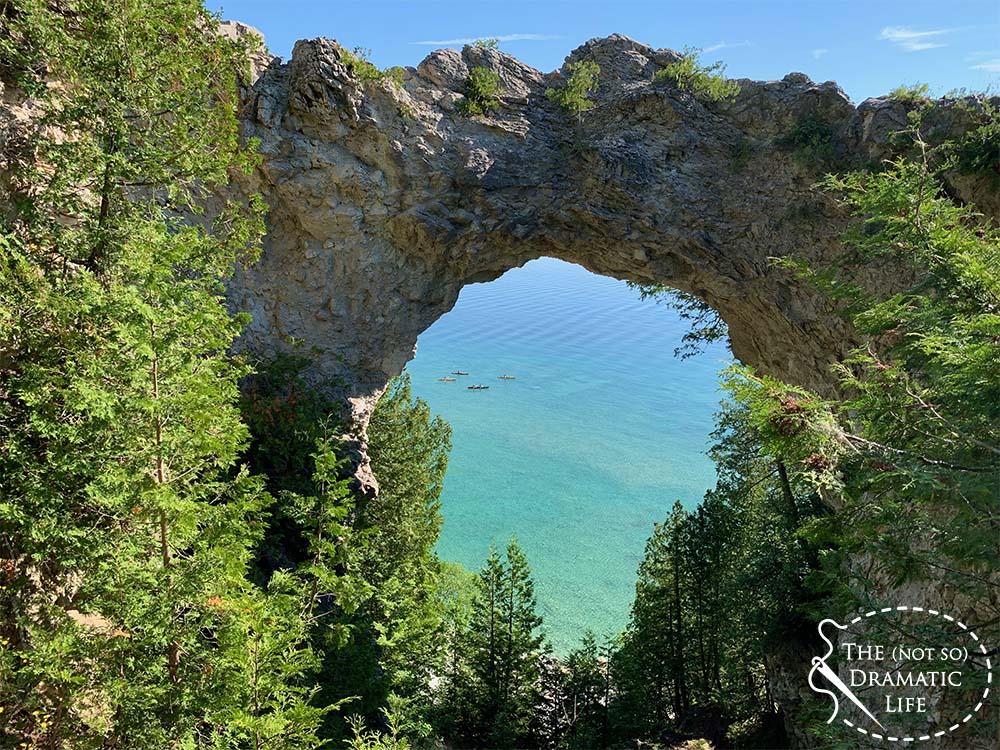
Enhance Specificity in Your Work Through Research
If I asked you to draw a bird, apartment building, or tree from memory, you would naturally create a generic form of that object. You may include detailed textures and shading, but it’s unlikely that you would capture the specific way a particular bird cocks its head, the exact trims of a building, or the unexpected twists and asymmetry of the tree.

The tall cactus in Oasis is one of the most classic cactus shapes frequently distilled into a simple form of two or three arms reaching off a vertical base. Since I used a photograph of a specific cactus, I was able to capture each bump of growth and the way light and shadow play on these surfaces.
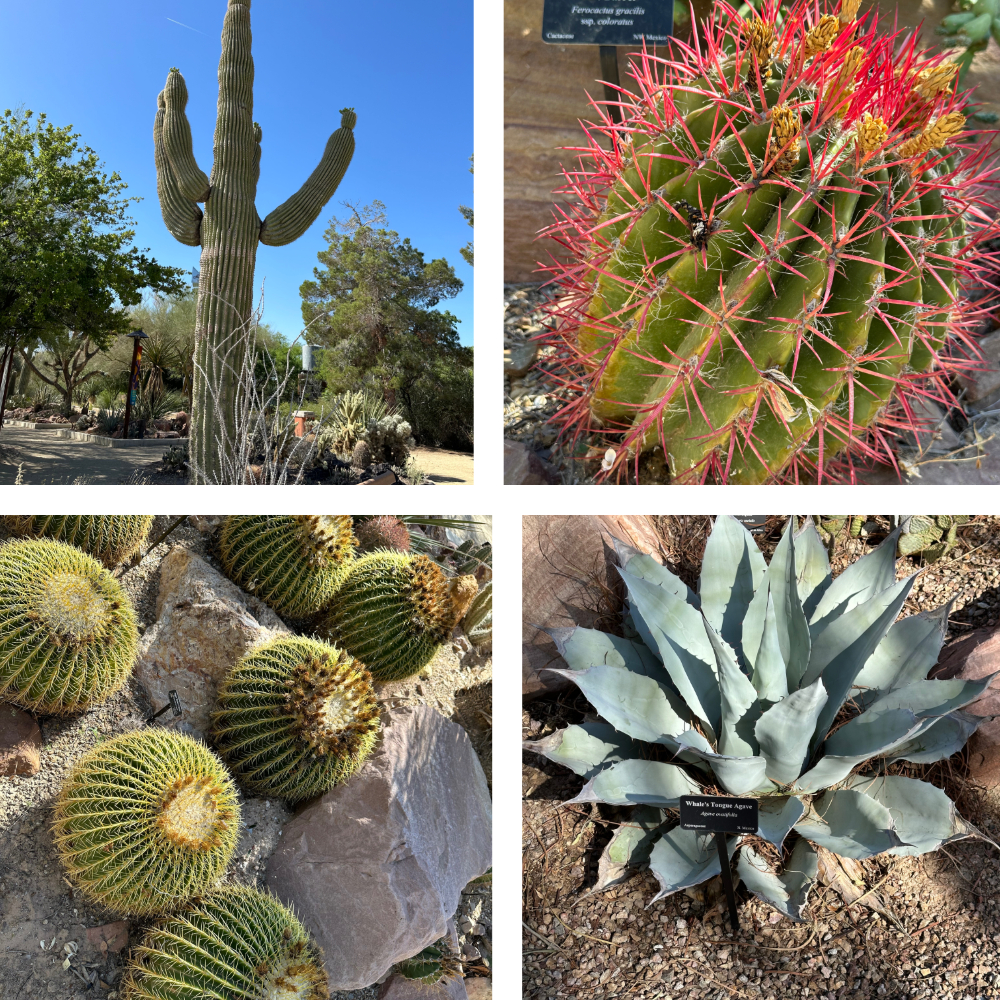
Do You Want To Experiment With Using Research Images?
Enrollment for Research to Abstraction, my new multi-session course on quilt design, is opening soon! Join the mailing list below to be among the first to hear about the course when it opens.


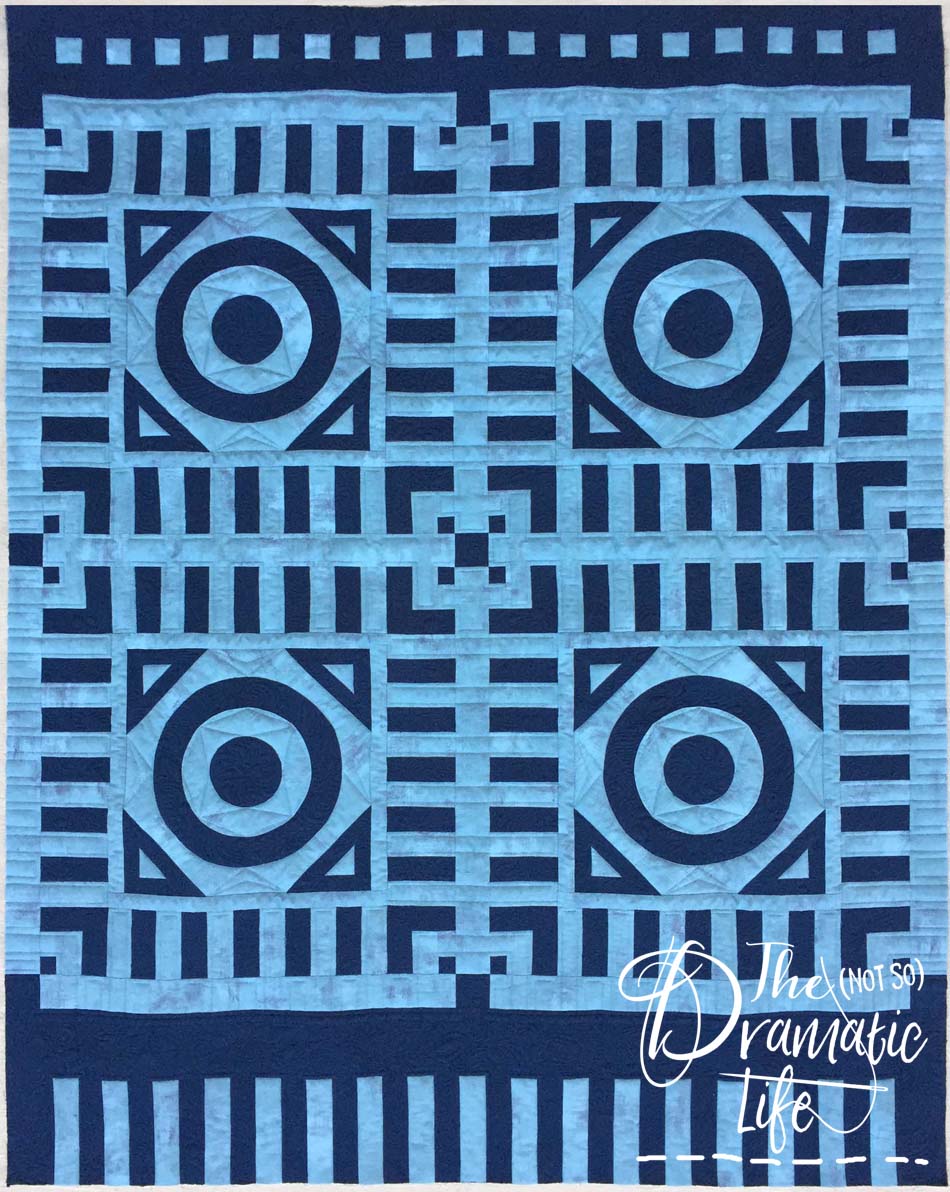
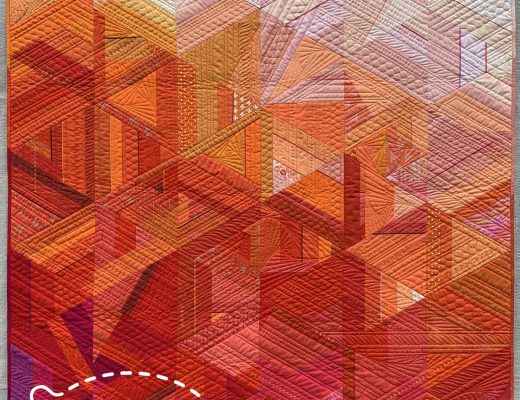
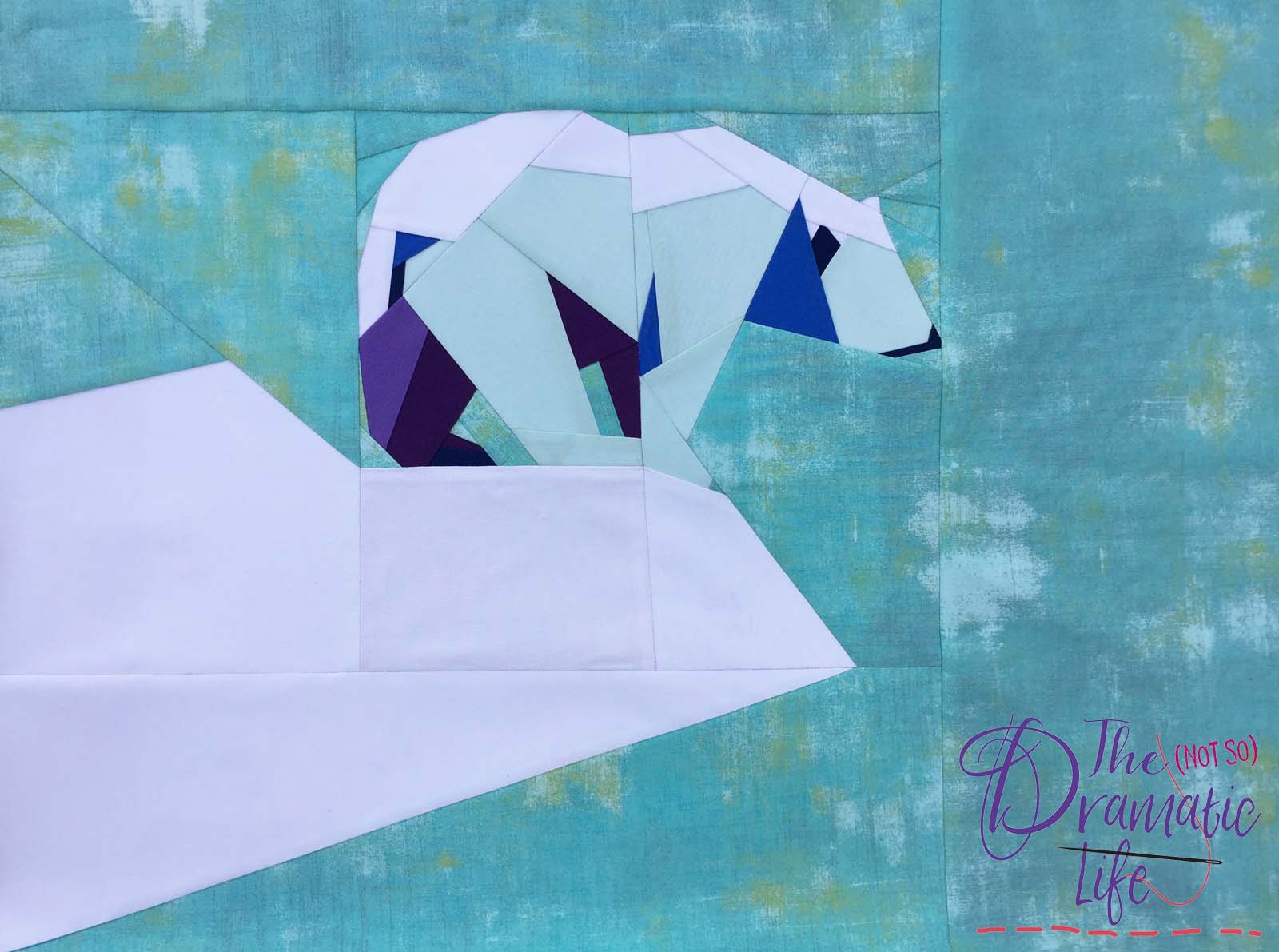


4 Comments
Kathie
June 20, 2025 at 8:35 amYour “abstraction” is an understatement. I love how the final product speaks to the color and texture of the original photo without being literal. Thanks again for helping me think outside the realm of reality without falling off the edge of the flat earth.
Kim
June 20, 2025 at 1:56 pmI remember when I first discovered your work. It was seeing “View Through the Rock.” It was fascinating to me to see how you interpreted what you were looking at. I’ve followed you ever since! Thanks for sharing these tips!
Donna
June 27, 2025 at 7:08 amI admire your work and have taken a class from you. I’m originally from Michigan and love the Mackinaw View from the Rock. What did you use for circular frame? I think I’d like to do something like that inside a wall bed, where large wall is blank when bed is pulled down, but with a Florida sunset. Thanks for all your many quilting knowledge you share.
thenotsodramaticlifeadmin
August 8, 2025 at 4:52 amMy dad actually built a custom frame for this piece. You can read more about the design and construction process here: https://thenotsodramaticlife.com/view-through-the-rock/